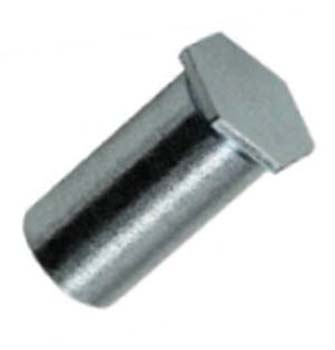Clinch Standoffs
Welcome to our comprehensive product description for Clinch Standoffs. In this guide, we will explore the world of these versatile and reliable fasteners that provide a secure and permanent attachment solution. Clinch standoffs are specially designed fastening components that do not require additional hardware, such as screws or bolts, for installation. Instead, they utilize a unique clinching process to attach themselves directly to the workpiece. These standoffs are widely used in electronics, automotive, aerospace, and other industries where efficient and cost-effective fastening solutions are essential.
Key Features and Benefits
Clinch standoffs offer a wide range of features and benefits that make them an indispensable component for various fastening applications. Let's explore some of their key advantages:
- Secure Attachment: The clinching process creates a secure and permanent connection, ensuring the standoff stays firmly in place.
- Versatile Applications: Clinch standoffs are used in various industries, including electronics, automotive, aerospace, and more.
- Efficient Installation: These standoffs do not require additional hardware for installation, saving time and labor costs.
- Cost-Effective: The elimination of screws or bolts reduces material and assembly costs, making them an economical choice.
- Space-Saving: Clinch standoffs have a compact design, making them ideal for applications with limited space for fastening hardware.
- High Load Capacity: These standoffs can handle significant loads and forces, providing reliable support for the attached components.
- Durable Materials: Clinch standoffs are available in various materials, including stainless steel, aluminum, and brass, offering options for different environments and applications.
- Electrical Isolation: Certain materials used in clinch standoffs help to electrically isolate components, preventing electrical shorts.
- Time-Saving: The clinching process is quick and straightforward, streamlining the assembly process.
- Tamper-Resistant: Once installed, clinch standoffs provide a tamper-resistant connection, enhancing the security of the assembly.
Types of Clinch Standoffs
Clinch standoffs come in different variations to accommodate various application requirements. Some common types include:
- Material: Clinch standoffs are available in different materials, each offering specific advantages for particular applications.
- Length: These standoffs come in different lengths to provide the desired space and clearance between components.
- Head Shape: Clinch standoffs can have different head shapes, such as round, hexagonal, or knurled, for specific aesthetic or functional purposes.
- Finish: Certain standoffs may have specific finishes, such as plating or coating, for enhanced aesthetics or additional protection.
Applications
Clinch standoffs find numerous applications across various industries due to their versatility and reliability. Some common applications include:
- Electronics: Used in electronic enclosures and circuit boards to securely mount components and create space for proper airflow.
- Automotive: Found in automotive assemblies for attaching panels, brackets, and electronic components.
- Aerospace: Utilized in aircraft assemblies for mounting critical components and securing interior fixtures.
- Telecommunications: Found in networking equipment for attaching panels and providing stability in high-vibration environments.
- Consumer Goods: Used in various consumer products, such as appliances and furniture, for secure fastening.
- Medical Devices: Found in medical equipment for reliable attachment of sensitive components.
- Industrial Equipment: Utilized in heavy machinery and equipment to provide space and stability between components.
Installation Process
The installation of clinch standoffs involves the following steps:
- Punching: Create a hole in the workpiece where the standoff will be installed.
- Insertion: Place the clinch standoff into the pre-punched hole.
- Clinching: Use a clinching tool to press and flare the end of the standoff, creating a secure connection with the workpiece.
- Verification: Check that the standoff is securely attached and provides the desired space and alignment.
Quality Assurance and Certifications
At OneMonroe, we prioritize quality and reliability in every clinch standoff we produce. Our manufacturing processes adhere to stringent quality standards, and our experienced team of engineers and technicians ensures that each standoff meets or exceeds industry specifications. We are committed to providing products that you can trust for your critical fastening applications.
Conclusion
Improve the structural integrity and ease of assembly in your projects with our Clinch Standoffs. Whether you need standoffs for circuit boards, sheet metal, or industrial applications, our selection offers reliable solutions that provide a secure and permanent fastening. Experience the efficiency and precision of our clinch standoffs by exploring our diverse range today.










